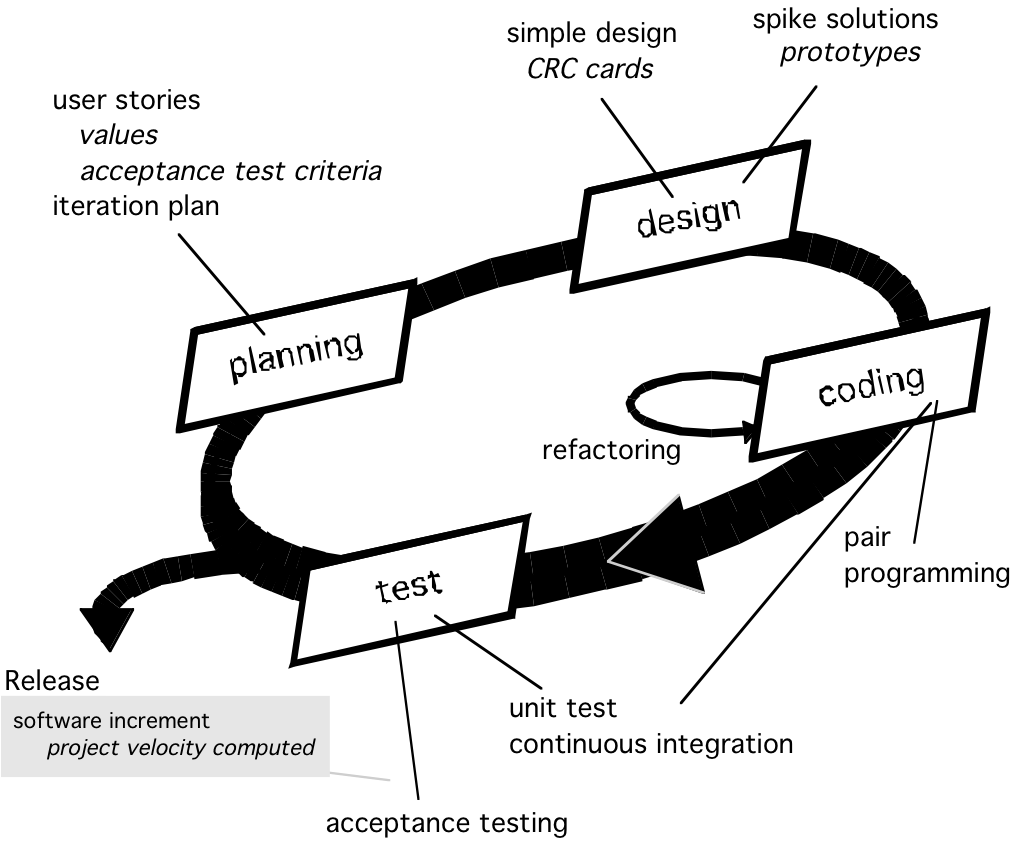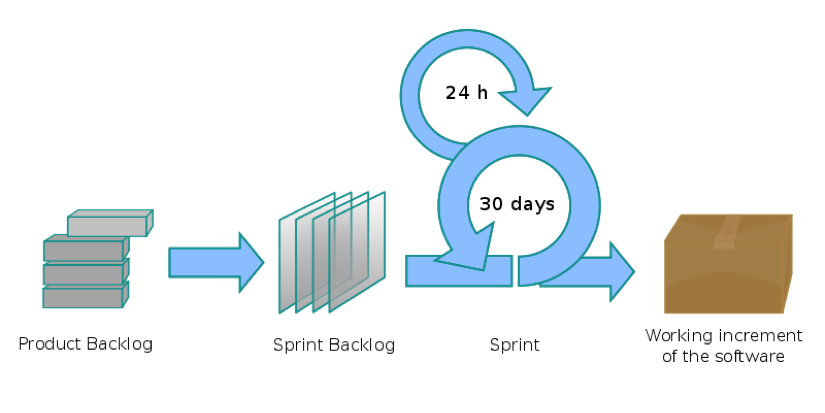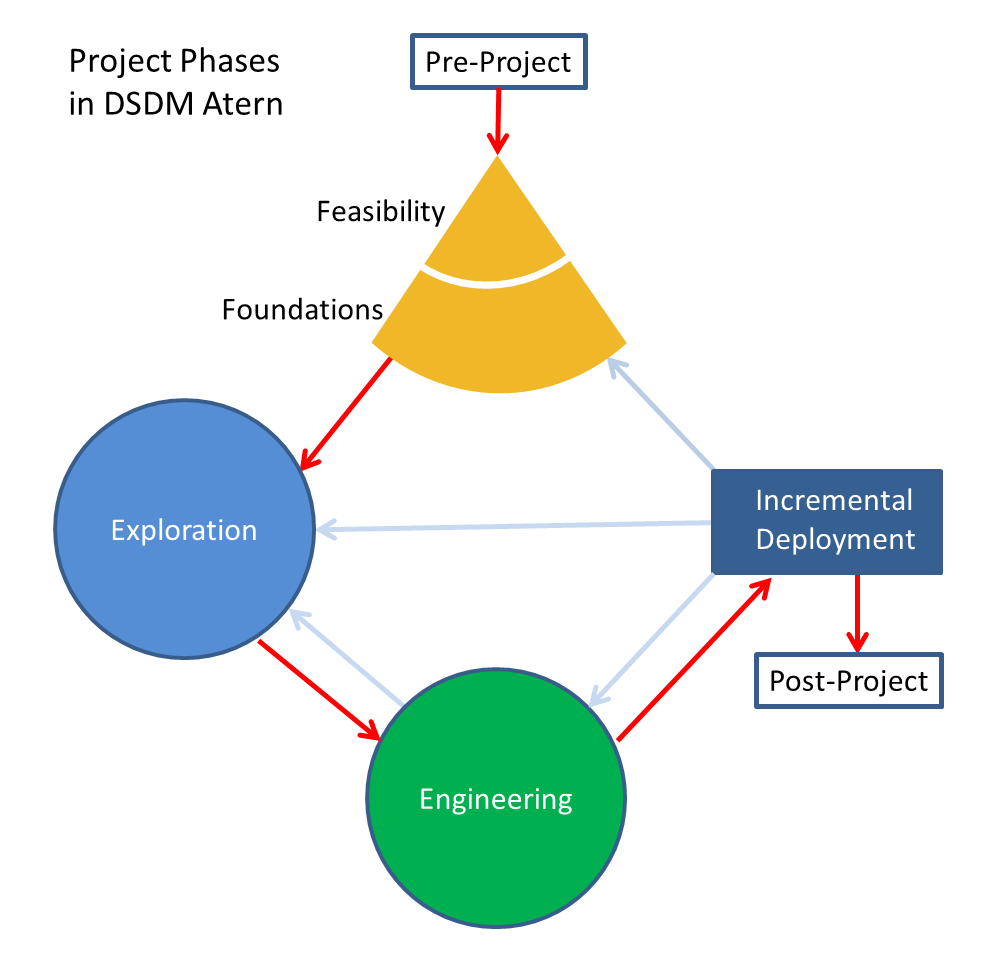CSC/ECE 517 Fall 2011/ch6 6d sk: Difference between revisions
Jump to navigation
Jump to search
| Line 32: | Line 32: | ||
===Dynamic Systems Development Method=== | ===Dynamic Systems Development Method=== | ||
[[File:DSDM_SK.png|300px|right]] | [[File:DSDM_SK.png|300px|right]] | ||
<br/><br/><br/><br/><br/><br/><br/><br/><br/><br/><br/><br/><br/><br/><br/> | <br/><br/><br/><br/><br/><br/><br/><br/><br/><br/><br/><br/><br/><br/><br/><br/><br/> | ||
===Crystal=== | ===Crystal=== | ||
Revision as of 04:46, 15 November 2011
The Agile Landscape
Overview
Introduction to Agile software development methodologies
Describe the methodologies
Extreme Programming

Extreme programming (XP) is currently the most popular approach to agile software development and was created by Kent Beck in 1996. XP is defined by a set of five values that establish a foundation for all work performed as part of development process. These five values are communication, simplicity, feedback, courage, and respect. Each individual value serves as a driver for specific activities, actions, and tasks.
- Communication - XP emphasize close, yet informal communication between customers and developers. This helps ensure effective communication between software engineers and other stakeholders.
- Simplicity - In order to achieve simplicity, XP requires developers to design only for the immediate needs of the project. This results in a simple design that can be implemented easy.
- Feedback - Feedback is received from three sources: software tests, the customer, and other software team members.
- Courage - In order to adhere to certain XP practices, Beck states that is requires courage.
- Respect - By following the other four values, an agile team will develop respect among its members and other stakeholder. As the team begins to achieve success in their delivery of software increments, they will also develop respect for the XP process itself.
XP consists of four framework activities: planning, design, coding, and testing as seen in the figure above. Each phase is summarized in the paragraphs that follow.
- Planning - The initial phase of the process involves the planning game. It is a requirements gathering activity that enables the members of the team to understand the business context for the software and involves listening to the customer. This leads to the creation of a set of user stories that describe the required output, features, and functionality of the software. Each story written by the customer is written on a index card and assigned a value based on its overall business value. Members of the team will then determine a cost (measured in weeks) for each story based on their estimation for how much work would be required to implement the story. The customers and developers will then work together to determine which group of stories will be implemented in the next iteration of the software.
- Design - The design phase of the process involves the creation of a simple design of the system and also provides implementation guidance for each story to be included in the iteration.
- Coding - After a preliminary design for the system is created, the team will then develop a set of unit tests for the system. These tests will serve as guidelines for the developers to focus only on getting the tests to pass and nothing more. One of the defining aspects of XP, involves the pair programming concept. XP recommends that two programmers should work together at one computer workstation to develop code. One person writes the code, while the other will watch and provide feedback. After a period of time, the two programmers will switch their roles.
- Test - In order to place an emphasize on tests, the unit tests generated during the code phase are ran anytime the code is modified to ensure no problems exist in the codebase.
Scrum

Dynamic Systems Development Method
